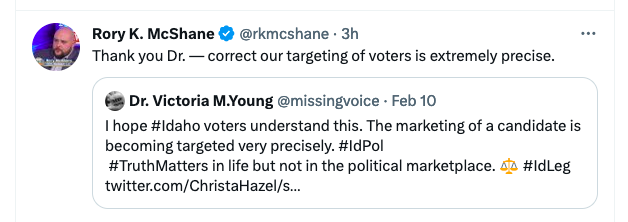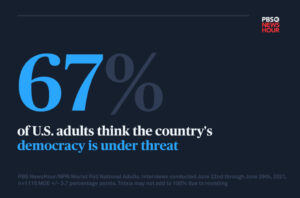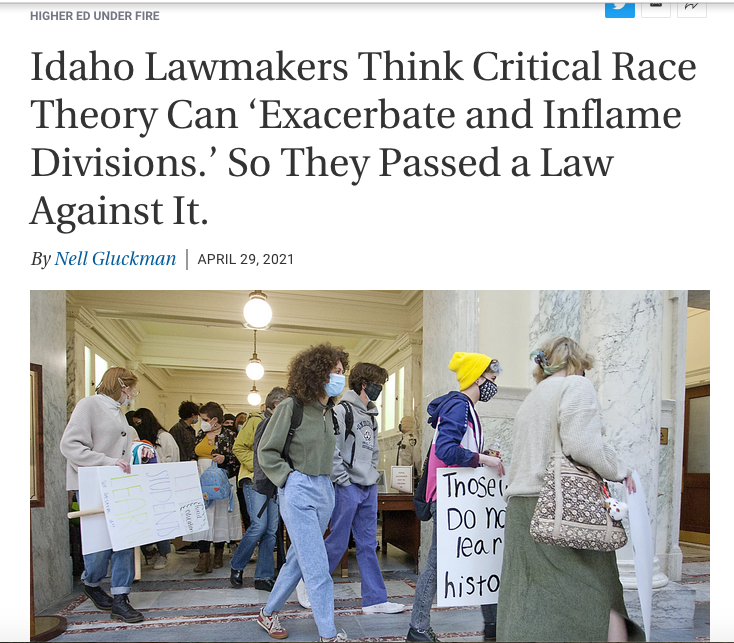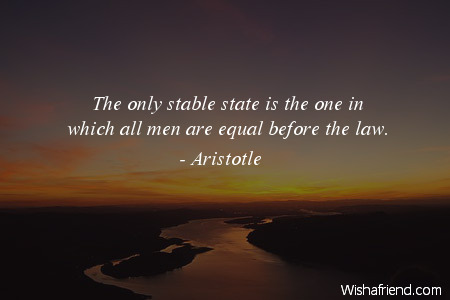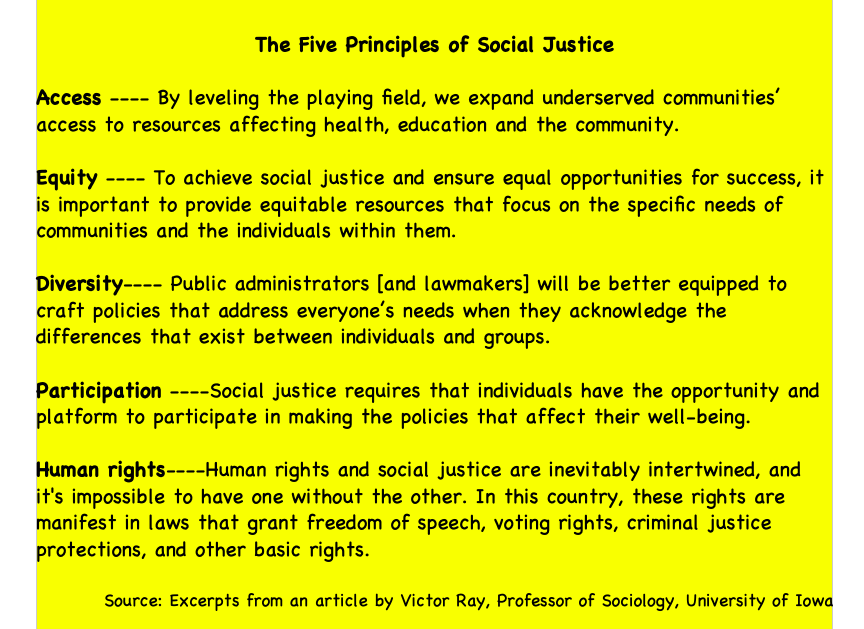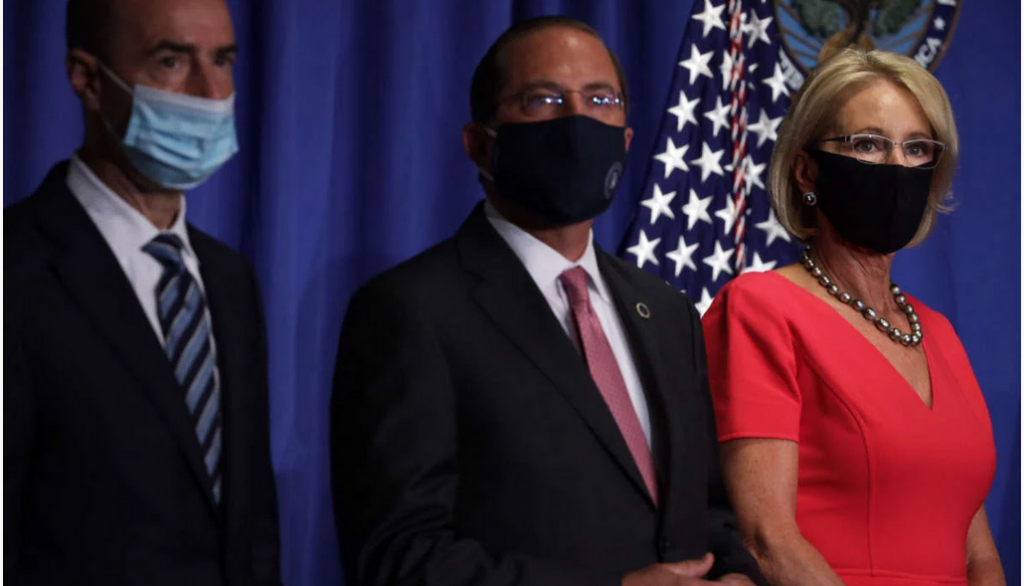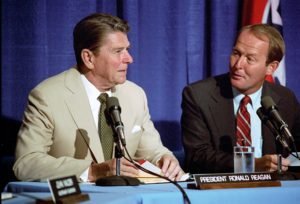Hillsdale College, 1776 Commission, Barney Charter School Initiative, American Classical Education, Inc., 1776 Civics Curriculum —those names should give us pause and set off alarm bells!!! But most people know little to nothing about a rapidly expanding plan aimed at framing the political thought of the next generation of Americans.
To say this is a serious threat to American democracy is no exaggeration.
Therefore —please— look at what is happening and consider this. Can you vilify and devalue an entire economic and political philosophy rendering it useless in stopping political corruption?

POLITICAL CORRUPTION An 1894 cartoon by Louis Dalrymple equating pay-offs made to the New York police with corporate contributions to senators. Posted by the Granger.
If you’ve heard it said — and believe it is plausible — that the philosophy in the school room in one generation is the philosophy of government in the next, take the facts seriously.
Start With Hillsdale College, “School Choice,” and the 1776 Commission
Since 1844, Hillsdale College has stood as a private conservative Christian college in Michigan claiming to pursue truth, defend liberty, and not take any federal funding. Additionally, Hillsdale runs a private K-12 school, manages the Barney Charter School Initiative (BCSI), and started a charter management organization. They also offer free on-line courses, the 1776 Civics Curriculum, summer seminars, a lecture series and “speech digest” carrying the lecture out to over six million readers.
Larry P. Arnn is their president and prior to coming to Hillsdale, in 2000, he founded and was former president of the Claremont Institute (no affiliation with Claremont colleges). If the name Larry Arnn doesn’t ring a bell, maybe you’ll recall the short-lived presidential 1776 Commission that he co-chaired. Billed as an advisory committee to support “patriot education,” its declared purpose was to…
“enable a rising generation to understand the history and principles of the founding of the United States in 1776 …“
Excluded from this commission were historians specializing in the time-frame of our founding. But included was the politically-influential founder of Turning Point USA (TPUSA) — Charlie Kirk. Beginning in 2012, Kirk’s TPUSA has embedded itself in high school and college campuses across the U.S.. TPUSA’s “projects” include an annual Student Action Summit, Professor Watch List, DivestU (discourages donors to higher ed), Campus Leadership Project, “school board watchlist,” and more recently TPUSA (Turning Point) Academy and Turning Point Faith.
Beginning in 2012, Kirk’s TPUSA has embedded itself in high school and college campuses across the U.S.. TPUSA’s “projects” include an annual Student Action Summit, Professor Watch List, DivestU (discourages donors to higher ed), Campus Leadership Project, “school board watchlist,” and more recently TPUSA (Turning Point) Academy and Turning Point Faith.
Kirk wages political war using what people on both “sides” agree are deceptive tactics. All the while, he continues escalating the culture wars by building upon a network of influence and big money. ExposedByCMD
Since the 1776 Project began, Arnn and Kirk both expanded and amplified their strategies to build and enable “a rising generation” of “patriots.”
Leveraging Publicly-Funded, Privately-Operated “School Choice”
As Jeff Bryant explained back in December of 2016, the Barney initiative mission statement points to Hillsdale’s political agenda.
“[The] former mission statement, since taken down, … said the Initiative seeks to ‘recover our public schools from the tide of a hundred years of progressivism … ‘The charter school vehicle possesses the conceptual elements that permit the launching of a significant campaign of classical school planting to redeem American public education.’”
Hillsdale began Barney charters in 2012 and recently expanded their reach through their new charter school management organization dubbed American Classical Education, Inc. (ACE). Many Barney charters already include “Classical” in naming their schools.
Hillsdale doesn’t see ACE as contrary to their stance against taking federal money. Regardless, federal funding is supporting charter start-ups and expansions. Hillsdale reasons that ACE is only “associated” with the college.
Assistant Provost for K-12 Education Kathleen O’Toole explains, “It [ACE] was formed to carry out the mission of our work in K-12 education but it’s not a Hillsdale College entity.”
Explaining The Charter Management Business
Charter management organizations such as ACE allow a single board to manage groups of schools, instead of each school having its own board. This can improve efficiency and philosophical alignment, O’Toole said.
Hillsdale’s ACE CEO, Joel Schellhammer, explained further.
“ … he wants ACE’s schools to be places where Hillsdale graduates apply for jobs. ‘Hillsdale has a tremendous pipeline of graduates …’” Hillsdale Collegian
Hillsdale College and its “associates” have created a system. But it isn’t a public education system like this country has had in place for over 150 years. This network is designed to recruit, train and supply leaders, teachers, and curriculum —steeped in Hillsdale’s philosophy— and “plant” them in the public education system at public expense.
A Network of Dissemination of Information
The messages coming at the public —from this well-funded, politically-connected network—don’t make sense. That’s why it makes sense to pause Hillsdale’s expansion into our public education system.
“… the college has inconspicuously been building a network of ‘classical education’ charter schools, which use public tax dollars to teach that systemic racism was effectively vanquished in the 1960s, that America was founded on ‘Judeo-Christian’ principles and that progressivism is fundamentally anti-American.” Salon Investigates
The network is complicated. So briefly, look at one example from the Claremont Institute — the organization co-founded by Larry Arnn.
A Claremont Institute project, The American Way of Life, claims “A new Right is needed to defend the American way of life and restore political liberty.” This is how they frame the political struggle in America.
“America is currently engaged in a regime-level struggle that will preserve or destroy the purpose that has defined it. On one side stands the American way of life, characterized by republican self-government and the habits of mind and character necessary to sustain it. On the other side stands identity politics, … These two regimes are in conflict and cannot coexist.”
We cannot coexist with differing political philosophies? The message is released! …
“A new Right is needed, one that understands itself as rooted in the noble cause of the American Revolution — unabashed and zealous in its determination to restore political liberty and politics itself.” A New Conservatism Must Emerge
Words Become “Dog Whistles”
Will people stop to think about what “identity politics” really is and what it is used for? I did.
And I found one point agreed upon by both “sides.” Identifying with a group does “rouse” some individuals into becoming part of a “politically cohesive body.” But Hillsdale concludes identity politics is extreme and divisive. Think this through.
 To contrast with Hillsdale’s opinion, here is an explanation from a more progressive perspective.
To contrast with Hillsdale’s opinion, here is an explanation from a more progressive perspective.
“Identity politics is when people of a particular race, ethnicity, gender, or religion form alliances and organize politically to defend their group’s interests. … Identity politics seems to be experiencing a surge in recent times, which has led some people to decry this approach to politics, calling it divisive.” Philosophy Talk Blog
If you have ever tried to organize people for a purposed action — a church or school fundraiser, a campaign for or against a law, or for a political party or candidate — you know it’s true that the first people to step up to help are those that can “identify” in some way with the cause.
Identifying with a group isn’t the problem; discrimination is.
“So long as some people are marginalized, victimized, or oppressed because of their identities, we will need identity politics.” Laura Maguire
Other Anti-Progressivism Claims Made By Hillsdale and Associates
In addition to “identity politics” being framed as divisive, a frequently repeated claim against progressivism is that it goes against the purpose of America and our “noble cause” as proclaimed in the Declaration of Independence.
 Remember, the Declaration was about “one People” dissolving their “Political Bands” with another (Great Britain) in order to assume a “separate and equal Station” on earth. The main purpose expounded upon — which set American democracy apart— is the institution of a Government, “deriving its just Powers from the Consent of the Governed.” Therefore, as directed by the Constitution, it’s been up to us—through our representatives— to determine and legislate the role of our Government in establishing and maintaining the “Safety and Happiness” of our People.
Remember, the Declaration was about “one People” dissolving their “Political Bands” with another (Great Britain) in order to assume a “separate and equal Station” on earth. The main purpose expounded upon — which set American democracy apart— is the institution of a Government, “deriving its just Powers from the Consent of the Governed.” Therefore, as directed by the Constitution, it’s been up to us—through our representatives— to determine and legislate the role of our Government in establishing and maintaining the “Safety and Happiness” of our People.
So to determine if there was any truth to the claims against progressivism, time was put into reviewing its history, when it predominated American political thought, and what laws are attributed to it. The research presented some variations in details but consistent major themes.
Both “sides” agree progressives believed and acted upon the philosophy that progress on social improvements can be made through government actions. Most historians agree on what triggered the Progressive Era—corruption, greed, and the alliance of large corporations with “machine politics.”
 Critics of progressivism claim it is un-American, “unpatriotic” and led to “the administrative state.”
Critics of progressivism claim it is un-American, “unpatriotic” and led to “the administrative state.”
The claim against the “administrative state” is that it is a centralized, “bureaucratic” system. But ask yourself, how does a government organize —institute— around the rule of law without “administering” those laws?
One Perspective: A Historian’s View of Progressivism
A well-respected historian of the past, Richard Hofstadter, viewed the general theme of “progressivism” as …
“the effort to restore a type of economic individualism and political democracy … and with that restoration to bring back a kind of morality and civic purity …” The Age of Reform, From Bryn to F.D.R., p5-6.
A Hillsdale College Supporter’s Perspective: A Critique of the Hillsdale Civics Curriculum
When assessing the 1776 K-12 Civics Curriculum, the Pioneer Institute Civics Audit noted the exorbitant amount of time devoted to progressivism. Yet, this is how they critiqued Hillsdale’s curriculum:
It is “the gold standard for civics curricula,” (p21), emphasizes “the Progressive movement’s gravely deleterious effects on America,” focuses on the “abhorrence of the Progressives,” and includes “an assessment of the malign effect of Progressivism on America.”(p22)
The Pioneer Institute includes charter schools among their priorities as well as “government transparency, privatization, economic development, government spending, and healthcare.” Source: SourceWatch
So now, having found reasons to question the civics curriculum’s bias against progressivism, the question becomes, are young American minds being indoctrinated with anti-progressivism lies?
Need More Facts About the Progressive Era? I did.

SOURCE: Addition of the time frames was mine. (Good Quick Overview/ Outline) American Historama
Reform Era Groups included the Grangers, Populists, Progressives, National Municipal League, Pragmatists, Woman’s Suffrage, Consumers’ Leagues, Labor Movement, Niagara Movement, Child Labor Committees, and Conservation Movement.
“Yet with all its variety in objectives and methods, Progressivism displayed far more unity than the forces of reform had been able to muster before 1900” (p311).
“The whole spirit of the Progressive movement involved opening the mind, not closing it; educating the public for change, not schooling it for subservience” (p329). Hofstadter, Miller, Aaron, “The American Republic”, Volume Two, 1970
Not wanting their efforts turned towards Marxian socialism, progressives sought solutions to the nation’s problems through lawmaking. They worked towards strengthening people’s participation in the democratic process.
Resulting state policies included:
- the “secret ballot,”
- direct primary,
- initiative,
- referendum,
- recall processes, and late in the era,
- women’s right to vote.
Other reforms that came out of the movement included:
- the development of “settlement houses” for the poverty-stricken,
- regulations on intrastate railroads, public utilities, child labour, worker’s safety, accident insurance for workers and their families,
- “trust busting” laws against monopolies,
- drug and food safety (including meat inspection), and
- preservation of natural resources (conservation) —establishing our National Parks.
Additionally, several civil rights organizations arose and continue working towards advancing civil rights.
Also during this era was Prohibition (18th Amendment, 1919) and its repeal by the 21st Amendment in 1933. But another constitutional amendment still stands that perhaps Hillsdale crusaders found objectionable. If the 17th Amendment (1913), changing the appointment of U.S. Senators to election by the people, is seen as the problem with progressivism, then that is what we need to hear about and debate.
A Look Now at the Actual “Gold Standard” Hillsdale College 1776 Curriculum
Note the choice of words directed against progressives:
- “they rejected the Founder’s views of … the pursuit of happiness”,
- “rejection of the philosophical principles of the American founding”,
- “reject the Declaration of Independence, natural rights, and social contract theory”.


 As with most effective directives to teachers, there is instruction as to the focus, the lesson, and a post-lesson follow-up, labeled here as exercises for “The American Mind.” THAT is but a glimpse. So you are encouraged to at least take a look at what Phil Williams highlighted for NewsChannel5 Nashville.
As with most effective directives to teachers, there is instruction as to the focus, the lesson, and a post-lesson follow-up, labeled here as exercises for “The American Mind.” THAT is but a glimpse. So you are encouraged to at least take a look at what Phil Williams highlighted for NewsChannel5 Nashville.
The Aim of All This?
Hillsdale College is “planting” schools and filling the teacher and leader “pipeline” with graduates schooled in Hillsdale’s political and economic philosophy. Although Hillsdale’s system is clearly aimed at “training the young … to become leaders …”, it IS NOT clear where these unelected “leaders” are taking the country.
With federal and state money flowing through the charter system, taxpayers have the right to know what Hillsdale considers “timeless truths.” Additionally, Hillsdale’s aim is now our business.  Obviously, the aim of Hillsdale College goes beyond serving its students in the traditional sense of what higher education provides. REALLY? Attacking social justice?
Obviously, the aim of Hillsdale College goes beyond serving its students in the traditional sense of what higher education provides. REALLY? Attacking social justice?
And let’s not forget to consider the other groups involved with Hillsdale such as the Turning Point USA network.
“In short, Turning Point’s new[est] aim is to … define education as a Christian nationalist dominion … [selling the strategy] … by saying what happens on campuses eventually reaches the halls of Congress.” “SOURCE:Charlie Kirk and Christian nationalist college team up for new propaganda campaign

“Taxation is Theft”? That’s Turning Point USA, USA, USA. USA? SOURCE of Images: TPUSA 2021 Investors Prospectus
Hillsdale College? Hum. Here’s What I Think.
I question Hillsdale’s motives. Why is Hillsdale College, a private Michigan Christian establishment, launching a national attack on progressivism?
And it is awfully odd they chose to use our Declaration in teaching that progressives rejected its principles. I think Hillsdale has rejected its principles. Think about it. One reason given for breaking ties with Britain was …
“HE [King of Great Britain] has excited domestic Insurrections amongst us…”
Yet, president Larry Arnn stands unquestionably with the former president of the United States. No doubt? Absolutely sure of the truth?
What Do You Think?
Are the anti-progressivism “teachings” in the Hillsdale College 1776 Civics Curriculum indoctrinating young Americans to loath progressive political thought?
 From the screaming matches at local school board meetings to the halls of Congress, the PCT strategy of tapping into passions—using people’s desires, fear, anger, and frustration as bait—is focused at American “Rule of Law.”
From the screaming matches at local school board meetings to the halls of Congress, the PCT strategy of tapping into passions—using people’s desires, fear, anger, and frustration as bait—is focused at American “Rule of Law.”

